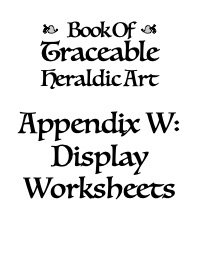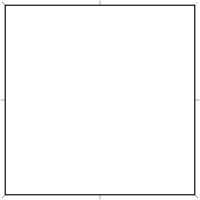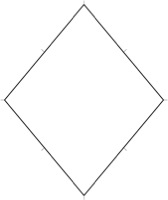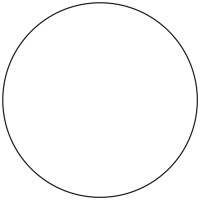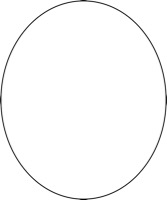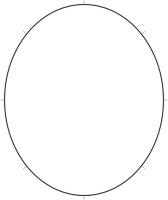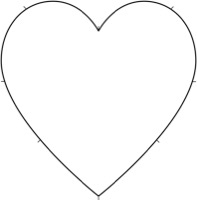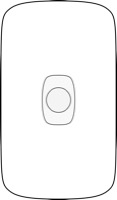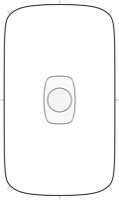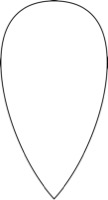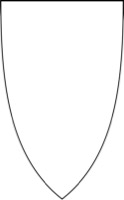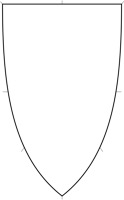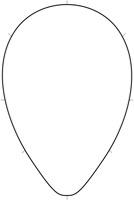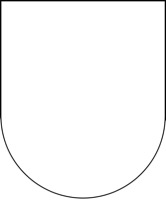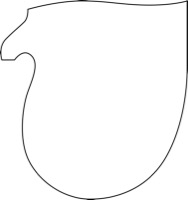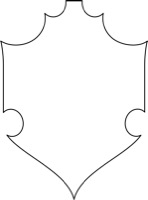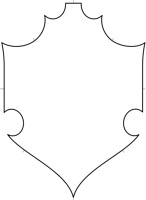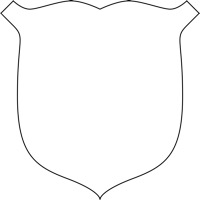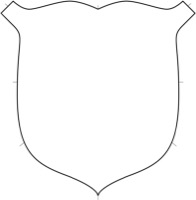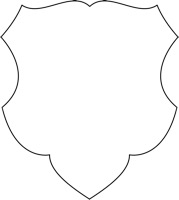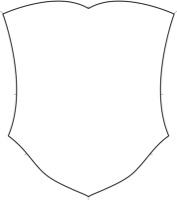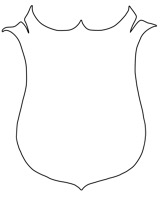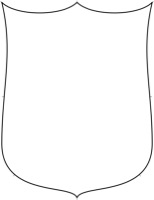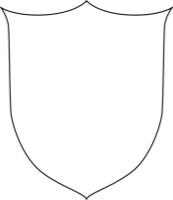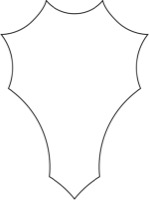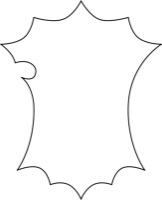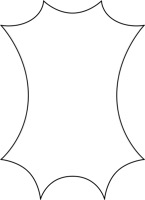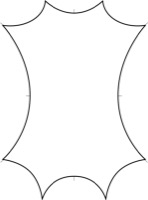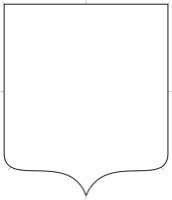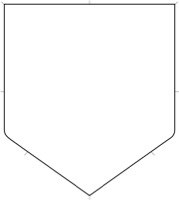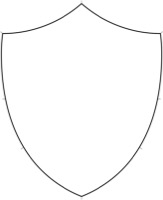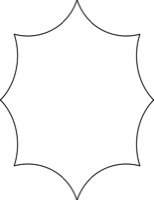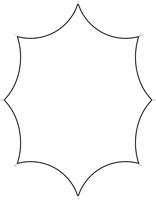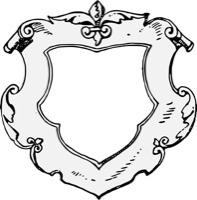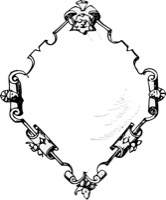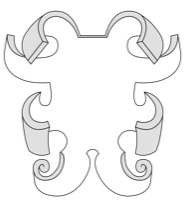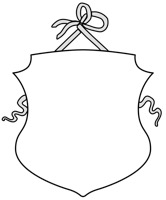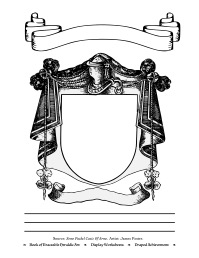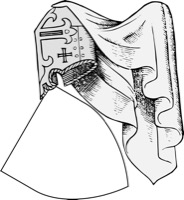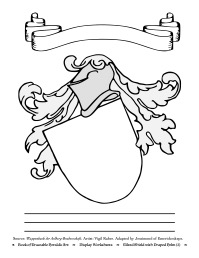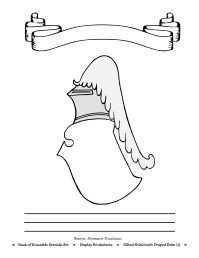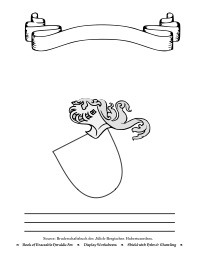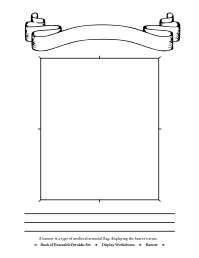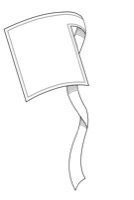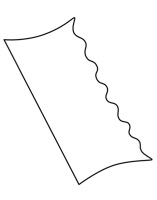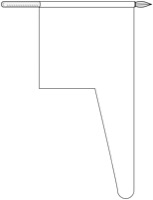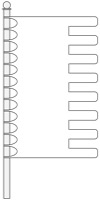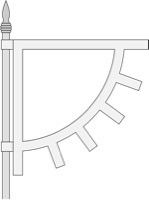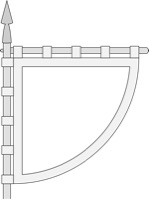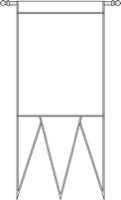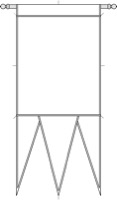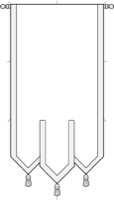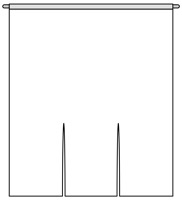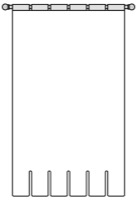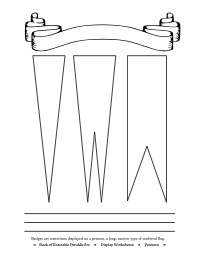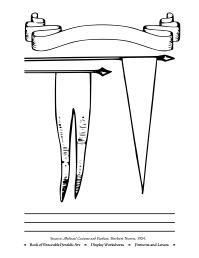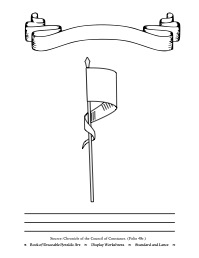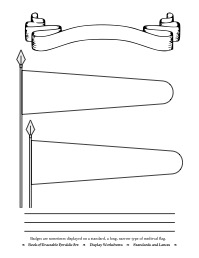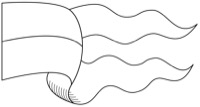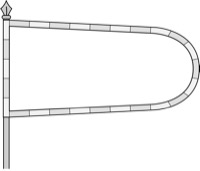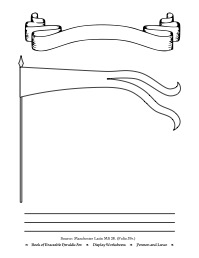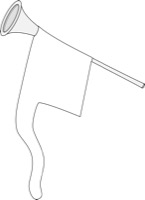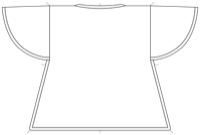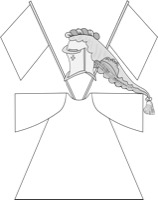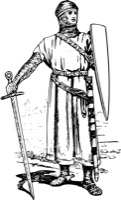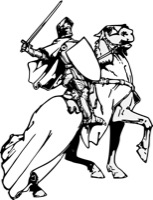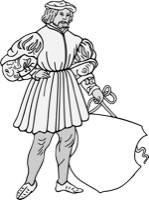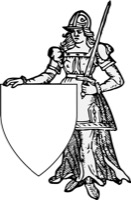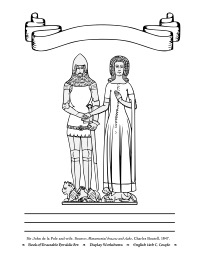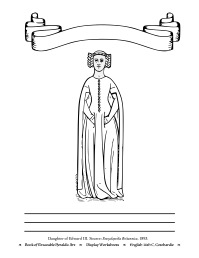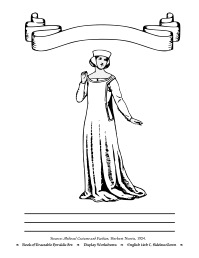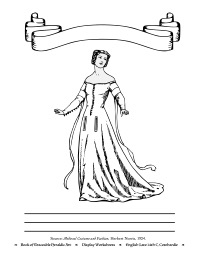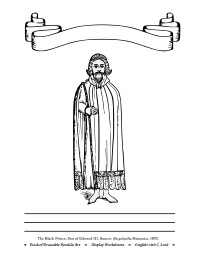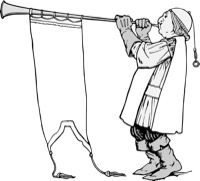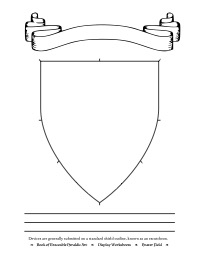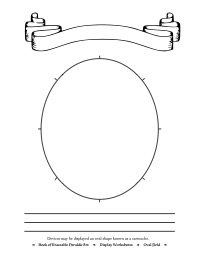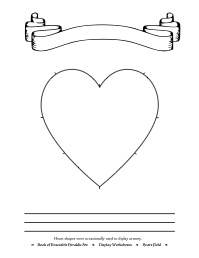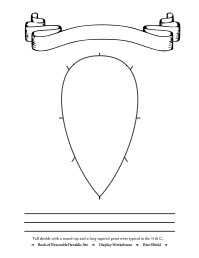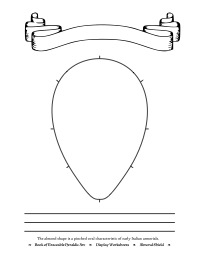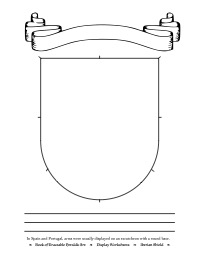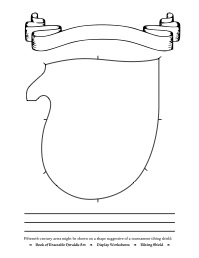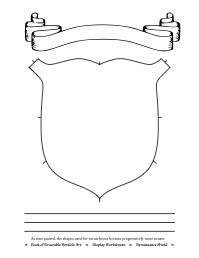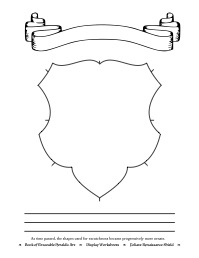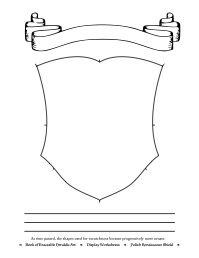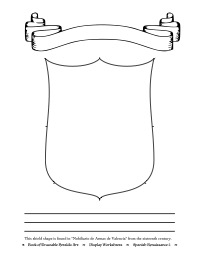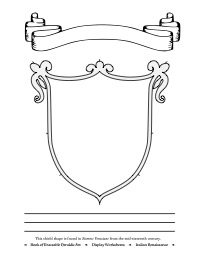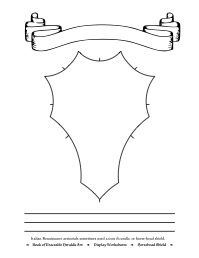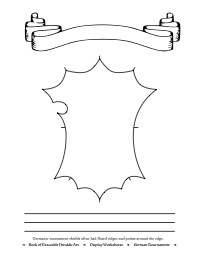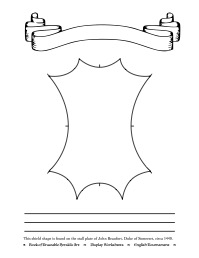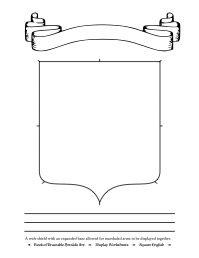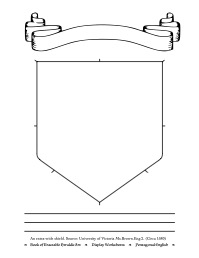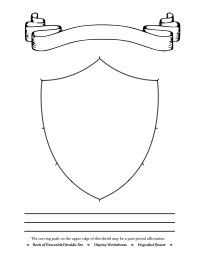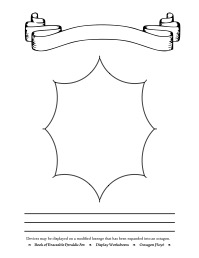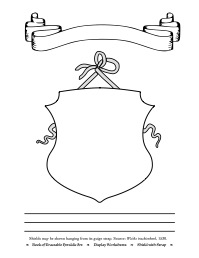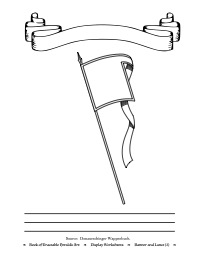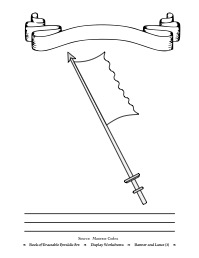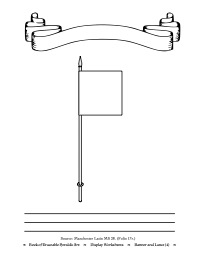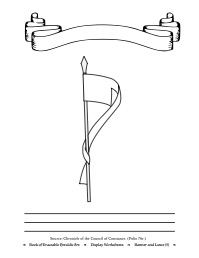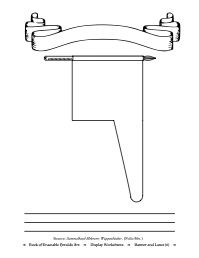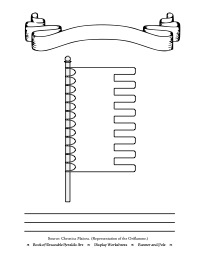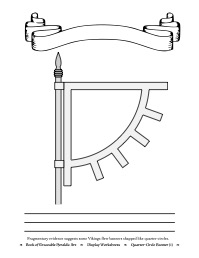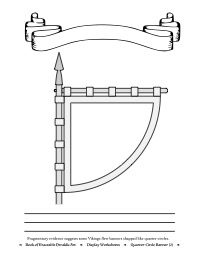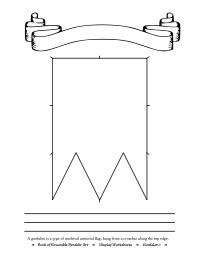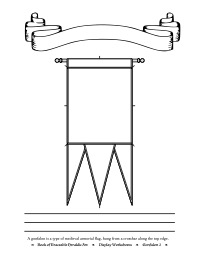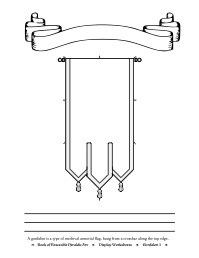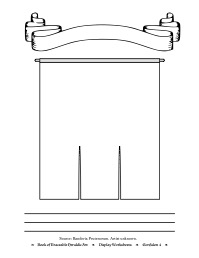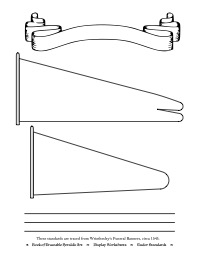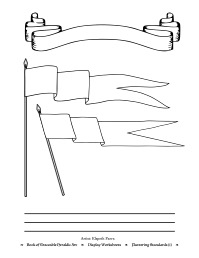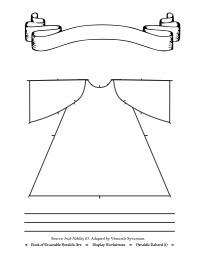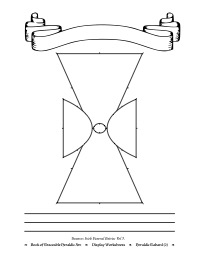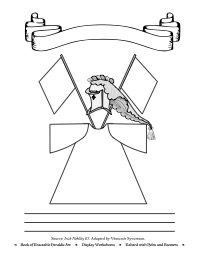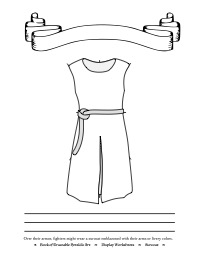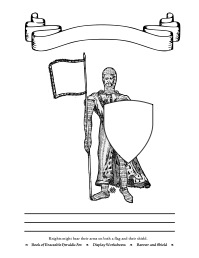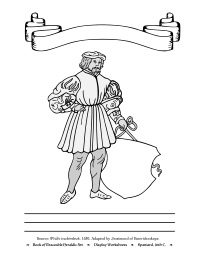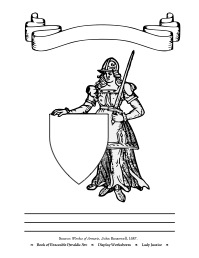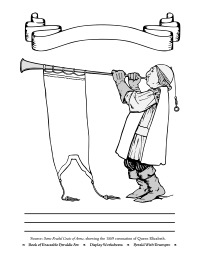84 Entries
•
Display:
Contents |
Details |
Pages
| Items
•
Item Shape:
Field | Surround
Combined PDF file (84 pages; 3MB)
-
Cover Page
(PDF,
PNG)
W.1
-
Heater Field
(PDF,
PNG; Field PNG, SVG, PDF; Surround PNG, SVG, PDF)
W.2
-
Square Field
(PDF,
PNG; Field PNG, SVG, PDF; Surround PNG, SVG, PDF)
W.3
-
Lozenge Field
(PDF,
PNG; Field PNG, SVG, PDF; Surround PNG, SVG, PDF)
W.4
-
Circular Field
(PDF,
PNG; Field PNG, SVG, PDF; Surround PNG, SVG, PDF)
W.5
-
Oval Field
(PDF,
PNG; Field PNG, SVG, PDF; Surround PNG, SVG, PDF)
W.6
-
Heart Field
(PDF,
PNG; Field PNG, SVG, PDF; Surround PNG, SVG, PDF)
W.7
-
Roman Scutum
(PDF,
PNG; Field PNG, SVG, PDF; Surround PNG, SVG, PDF)
W.8
-
Kite Shield
(PDF,
PNG; Field PNG, SVG, PDF; Surround PNG, SVG, PDF)
W.9
-
Truncated Kite
(PDF,
PNG; Field PNG, SVG, PDF; Surround PNG, SVG, PDF)
W.10
-
Almond Shield
(PDF,
PNG; Field PNG, SVG, PDF; Surround PNG, SVG, PDF)
W.11
-
Iberian Shield
(PDF,
PNG; Field PNG, SVG, PDF; Surround PNG, SVG, PDF)
W.12
-
Tilting Shield
(PDF,
PNG; Field PNG, SVG; Surround PNG, SVG)
W.13
-
Italian Tilting Shield
(PDF,
PNG; Field PNG, SVG; Surround PNG, SVG)
W.14
-
Renaissance Shield
(PDF,
PNG; Field PNG, SVG; Surround PNG, SVG)
W.15
-
Foliate Renaissance Shield
(PDF,
PNG; Field PNG, SVG; Surround PNG, SVG)
W.16
-
Polish Renaissance Shield
(PDF,
PNG; Field PNG, SVG; Surround PNG, SVG)
W.17
-
Spanish Renaissance
(PDF,
PNG; Surround PNG, SVG, PDF)
W.18
-
Spanish Renaissance 2
(PDF,
PNG; Surround PNG, SVG, PDF)
W.19
-
Italian Renaissance
(PDF,
PNG; Field PNG, SVG, PDF; Surround PNG, SVG, PDF)
W.20
-
Horsehead Shield
(PDF,
PNG; Field PNG, SVG; Surround PNG, SVG, PDF)
W.21
-
German Tournament
(PDF,
PNG; Field PNG, SVG, PDF; Surround PNG, SVG, PDF)
W.22
-
English Tournament
(PDF,
PNG; Field PNG, SVG, PDF; Surround PNG, SVG, PDF)
W.23
-
Square English
(PDF,
PNG; Field PNG, SVG; Surround PNG, SVG)
W.24
-
Pentagonal English
(PDF,
PNG; Field PNG, SVG; Surround PNG, SVG)
W.25
-
Engrailed Heater
(PDF,
PNG; Surround PNG, SVG, PDF)
W.26
-
Octagon Ployé
(PDF,
PNG; Field PNG, SVG; Surround PNG, SVG, PDF)
W.27
-
German 16th C. Frame
(PDF,
PNG; Surround PNG, SVG, PDF)
W.28
-
German 16th C. Lozenge
(PDF,
PNG; Surround PNG, SVG, PDF)
W.29
-
Italian 16th C. Frame
(PDF,
PNG; Surround PNG, SVG, PDF)
W.30
-
17th C. Scrollwork
(PDF,
PNG; Surround PNG, SVG, PDF)
W.31
-
Shield with Strap
(PDF,
PNG; Surround PNG, SVG, PDF)
W.32
-
Draped Achievement
(PDF,
PNG)
W.33
-
Tilted Shield with Draped Helm (1)
(PDF,
PNG; Surround PNG, SVG, PDF)
W.34
-
Tilted Shield with Draped Helm (2)
(PDF,
PNG)
W.35
-
Tilted Shield with Draped Helm (3)
(PDF,
PNG)
W.36
-
Shield with Helm & Mantling
(PDF,
PNG)
W.37
-
Banner
(PDF,
PNG)
W.38
-
Banners and Lances
(PDF,
PNG)
W.39
-
Banner and Lance (1)
(PDF,
PNG; Surround PNG, SVG, PDF)
W.40
-
Banner and Lance (2)
(PDF,
PNG; Field PNG, SVG, PDF; Surround PNG, SVG, PDF)
W.41
-
Banner and Lance (3)
(PDF,
PNG; Field PNG, SVG, PDF; Surround PNG, SVG, PDF)
W.42
-
Banner and Lance (4)
(PDF,
PNG; Surround PNG, SVG, PDF)
W.43
-
Banner and Lance (5)
(PDF,
PNG; Surround PNG, SVG, PDF)
W.44
-
Banner and Lance (6)
(PDF,
PNG; Surround PNG, SVG)
W.45
-
Banner and Pole
(PDF,
PNG; Charge PNG, SVG, PDF)
W.46
-
Quarter-Circle Banner (1)
(PDF,
PNG; Surround PNG, SVG, PDF)
W.47
-
Quarter-Circle Banner (2)
(PDF,
PNG; Surround PNG, SVG, PDF)
W.48
-
Gonfalon 1
(PDF,
PNG; Surround PNG, SVG, PDF)
W.49
-
Gonfalon 2
(PDF,
PNG; Field PNG, SVG, PDF; Surround PNG, SVG, PDF)
W.50
-
Gonfalon 3
(PDF,
PNG; Field PNG, SVG, PDF; Surround PNG, SVG, PDF)
W.51
-
Gonfalon 4
(PDF,
PNG; Charge PNG, SVG, PDF)
W.52
-
Gonfalon 5
(PDF,
PNG; Charge PNG, SVG, PDF)
W.53
-
Gonfalon and Lance
(PDF,
PNG; Surround PNG, SVG, PDF)
W.54
-
Pennons
(PDF,
PNG)
W.55
-
Pennons and Lances
(PDF,
PNG)
W.56
-
Pavon and Lance
(PDF,
PNG; Field PNG, SVG; Surround PNG, SVG)
W.57
-
Standards
(PDF,
PNG; Field PNG, SVG, PDF)
W.58
-
Tudor Standards
(PDF,
PNG; Surround PNG, SVG, PDF)
W.59
-
Standard and Lance
(PDF,
PNG)
W.60
-
Standards and Lances
(PDF,
PNG)
W.61
-
Fluttering Standards (1)
(PDF,
PNG; Surround PNG, SVG, PDF)
W.62
-
Fluttering Standards (2)
(PDF,
PNG; Field PNG, SVG, PDF)
W.63
-
Guidon and Lance
(PDF,
PNG; Field PNG, SVG, PDF; Surround PNG, SVG, PDF)
W.64
-
Pennon and Lance
(PDF,
PNG)
W.65
-
Trumpet Banner
(PDF,
PNG; Surround PNG, SVG, PDF)
W.66
-
Heraldic Tabard (1)
(PDF,
PNG; Surround PNG, SVG, PDF)
W.67
-
Heraldic Tabard (2)
(PDF,
PNG; Surround PNG, SVG, PDF)
W.68
-
Heraldic Tabard (3)
(PDF,
PNG; Surround PNG, SVG)
W.69
-
Tabard with Helm and Banners
(PDF,
PNG; Field PNG, SVG, PDF)
W.70
-
Surcoat
(PDF,
PNG; Field PNG, SVG, PDF; Surround PNG, SVG, PDF)
W.71
-
Crusader, 11th C.
(PDF,
PNG; Surround PNG, SVG, PDF)
W.72
-
Banner and Shield
(PDF,
PNG; Surround PNG, SVG, PDF)
W.73
-
Mounted Knight
(PDF,
PNG; Surround PNG, SVG, PDF)
W.74
-
Spaniard, 16th C.
(PDF,
PNG; Surround PNG, SVG, PDF)
W.75
-
Lady Justice
(PDF,
PNG; Surround PNG, SVG, PDF)
W.76
-
English 14th C. Couple
(PDF,
PNG)
W.77
-
English 14th C. Cotehardie
(PDF,
PNG)
W.78
-
English 14th C. Sideless Gown
(PDF,
PNG)
W.79
-
English Late 14th C. Cotehardie
(PDF,
PNG)
W.80
-
English 14th C. Lord
(PDF,
PNG)
W.81
-
English 15th C. Gentleman
(PDF,
PNG)
W.82
-
English 16th C. Procession
(PDF,
PNG; Surround PNG, SVG)
W.83
-
Herald With Trumpet
(PDF,
PNG; Surround PNG, SVG)
W.84
Heater Field §
Devices are generally submitted on a standard shield outline, known as an escutcheon.
Square Field §
Badges are submitted on a square outline, even if they are fieldless.
Lozenge Field §
Devices may be submitted on a lozenge, a less-martial alternative to the shield outline.
Circular Field §
Badges are often displayed on a circle, called a roundel.
Oval Field §
Devices may be displayed an oval shape known as a cartouche.
Heart Field §
Heart shapes were occasionally used to diplay armory.
Roman Scutum §
Roman legionaries carried large rectangular shields with a domed central boss.
Kite Shield §
Tall shields with a round top and a long tapered point were typical in the 11th C..
Truncated Kite §
Later versions of the kite shield had their tops flattened, but retained the pronounced point.
Almond Shield §
The almond shape is a pinched oval characteristic of early Italian armorials.
Iberian Shield §
In Spain and Portugal, arms were usually displayed on an escutcheon with a round base.
Tilting Shield §
Fifteenth-century arms might be shown on a shape suggestive of a tournament tilting shield.
Italian Tilting Shield §
This shield shape is found in Venete con le Loro Armi from the early sixteenth century. .
Renaissance Shield §
As time passed, the shapes used for escutcheons became progressively more ornate.
Foliate Renaissance Shield §
As time passed, the shapes used for escutcheons became progressively more ornate.
Polish Renaissance Shield §
As time passed, the shapes used for escutcheons became progressively more ornate.
Spanish Renaissance §
This shield shape is found in "Armas de los Condes" from the early sixteenth century.
Spanish Renaissance 2 §
This shield shape is found in "Nobiliario de Armas de Valencia" from the sixteenth century.
Italian Renaissance §
This shield shape is found in Stemme Veneziane from the mid-sixteenth century.
Horsehead Shield §
Italian Renaissance armorials sometimes used a testa di cavallo, or horse-head shield.
German Tournament §
Germanic tournament shields often had fluted ridges and points around the edge.
English Tournament §
This shield shape is found on the stall plate of John Beaufort, Duke of Somerset, circa 1440.
Square English §
A wide shield with an expanded base allowed for marshaled arms to be displayed together.
Engrailed Heater §
The curving peak on the upper edge of this shield may be a post-period affectation.
Octagon Ployé §
Devices may be displayed on a modified lozenge that has been expanded into an octagon.
Tilted Shield with Draped Helm (1) §
Tilted Shield with Draped Helm (2) §
Tilted Shield with Draped Helm (3) §
Shield with Helm & Mantling §
Banner §
A banner is a type of medieval armorial flag, displaying the bearer’s arms.
Quarter-Circle Banner (1) §
Fragmentary evidence suggests some Vikings flew banners shapped like quarter-circles.
Quarter-Circle Banner (2) §
Fragmentary evidence suggests some Vikings flew banners shapped like quarter-circles.
Gonfalon 1 §
A gonfalon is a type of medieval armorial flag, hung from a crossbar along the top edge.
Gonfalon 2 §
A gonfalon is a type of medieval armorial flag, hung from a crossbar along the top edge.
Gonfalon 3 §
A gonfalon is a type of medieval armorial flag, hung from a crossbar along the top edge.
Gonfalon 5 §
Adapted from images of a fourteenth-century exemplar from Blonay Castle.
Pennons §
Badges are sometimes displayed on a pennon, a long, narrow type of medieval flag.
Standards §
Badges are sometimes displayed on a standard, a long, narrow type of medieval flag.
Tudor Standards §
These standards are traced from Wriothesley's Funeral Banners, circa 1545.
Standards and Lances §
Badges are sometimes displayed on a standard, a long, narrow type of medieval flag.
Fluttering Standards (1) §
Fluttering Standards (2) §
Guidon and Lance §
A guidon is a shorter version of a standard, used by non-royal military commanders.
Tabard with Helm and Banners §
Surcoat §
Over their armor, fighters might wear a surcoat emblazoned with their arms or livery colors.
Banner and Shield §
Knights might bear their arms on both a flag and their shield.
English 14th C. Cotehardie §
English 14th C. Sideless Gown §
English Late 14th C. Cotehardie §
English 15th C. Gentleman §
English 16th C. Procession §
Foliate Renaissance Shield
Polish Renaissance Shield
Tilted Shield with Draped Helm (1)
Tilted Shield with Draped Helm (2)
Tilted Shield with Draped Helm (3)
Shield with Helm & Mantling
Quarter-Circle Banner (1)
Quarter-Circle Banner (2)
Tabard with Helm and Banners
English 14th C. Cotehardie
English 14th C. Sideless Gown
English Late 14th C. Cotehardie
English 15th C. Gentleman
English 16th C. Procession
Foliate Renaissance Shield
Polish Renaissance Shield
Tilted Shield with Draped Helm (1)
Quarter-Circle Banner (1)
Quarter-Circle Banner (2)
Tabard with Helm and Banners
English 16th C. Procession

